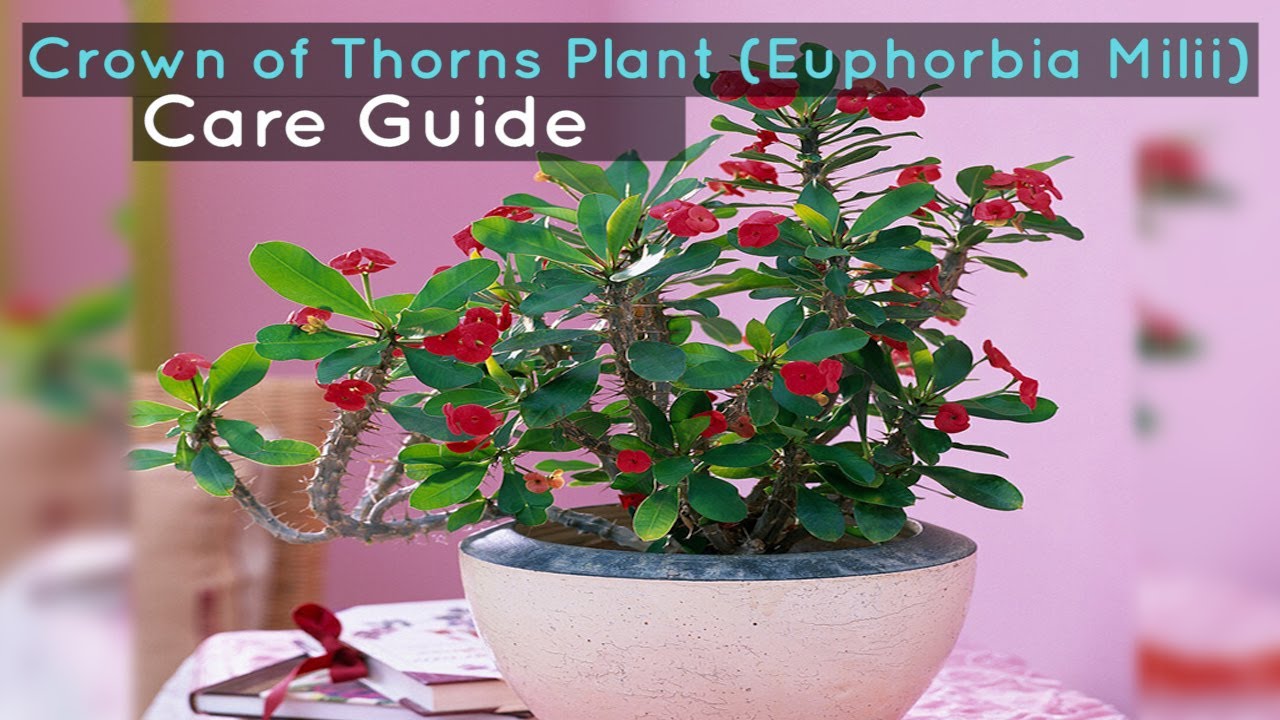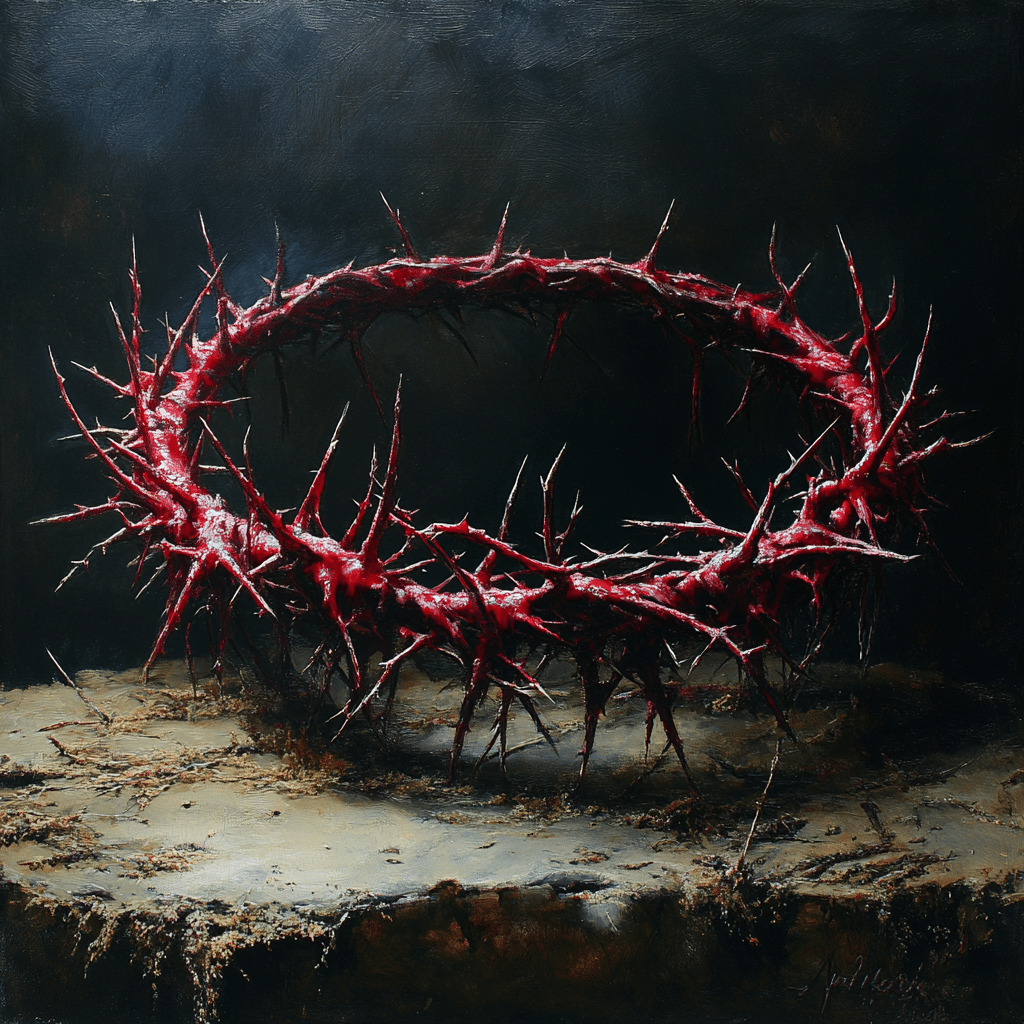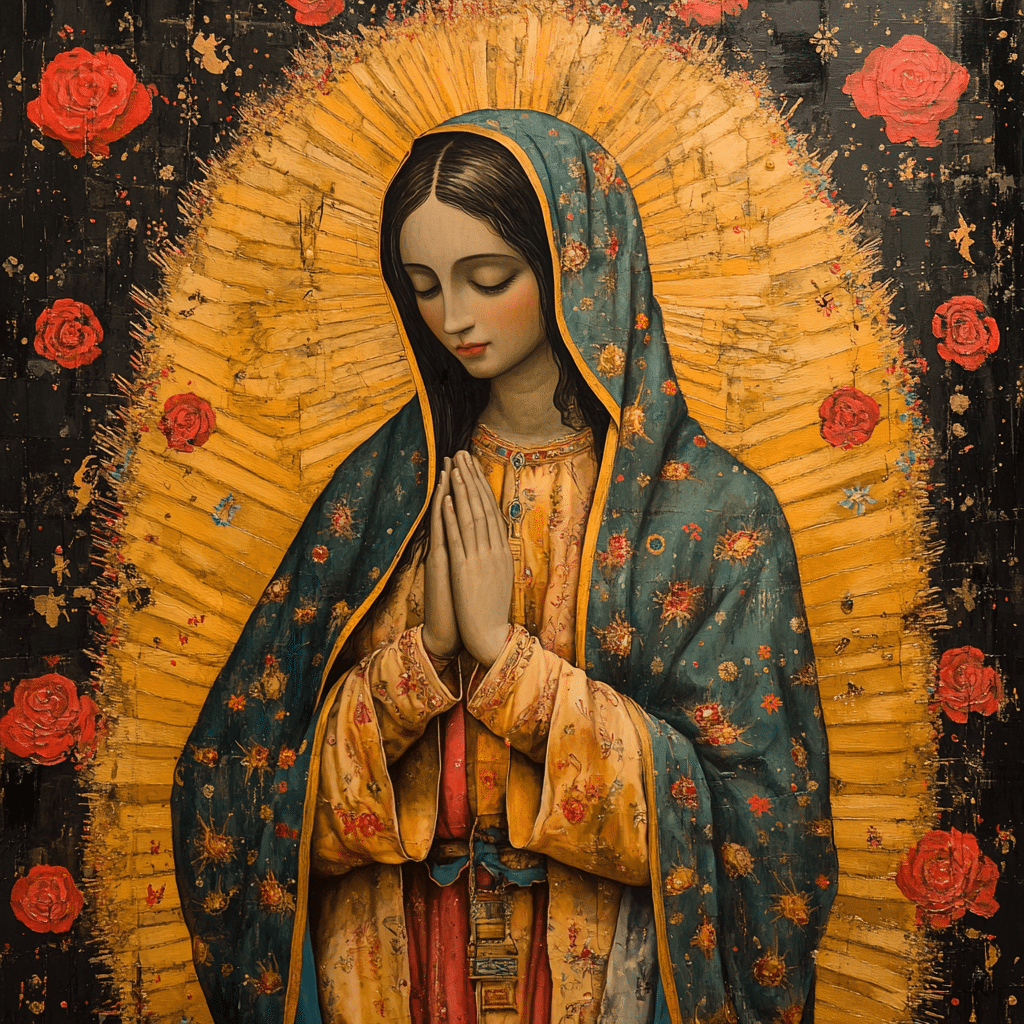The crown of thorns is more than just a prickly relic of history; it’s a profound emblem that captures the essence of Jesus’ kingship amidst severe suffering. In a world where authority and prestige often come without consequence, the crown of thorns flips that narrative on its head. It stood not only as a source of pain but also a claim to ultimate sovereignty—a paradox that challenges our understanding of what it means to reign. So, let’s dig into the historical context, the artistic depictions, theological implications, and how this poignant symbol resonates in today’s conversations about social justice and resistance.

The Historical Context of the Crown of Thorns
To truly grasp the significance of the crown of thorns, we need to step into the shoes of those living in the first century CE. Back then, a crown was a symbol of authority. However, Jesus’ crown of thorns represents a twisted irony—one of deep pain shrouded in the guise of leadership. The Roman soldiers crafted this crown to mock Jesus, who had claimed to be a king, underscoring the dissonance between societal power and divine authority.
This act occurred during a tumultuous political landscape where authority was frequently challenged. The Jewish people awaited a Messiah who would liberate them, and the crown of thorns became a tangible reminder of the earthly authorities that failed to deliver. By exploring the socio-political climate during Jesus’ life, we can appreciate how the crown of thorns serves both as a symbol of derision and a testament to spiritual kingship.
Moreover, thorns throughout religious texts often symbolize suffering, death, and the burden of sin. When the soldiers placed the crown of thorns on Jesus’ head, they created a living metaphor for his struggle against oppression and mortality. As we can see from Matthew 27:29, the act was not merely physical torment but a mockery of Jesus’ very identity—a king mocked by those who couldn’t fathom the true nature of His rule.

The Significance of the Crown of Thorns in Christian Iconography
The Crown of Thorns in Art and Literature
Imagine walking through the Louvre and stumbling upon the crown of thorns in artworks that reveal its rich symbolism. Artists like Caravaggio and Titian have painted striking depictions where pain and royalty coexist. Sandro Botticelli’s “The Mystical Nativity” offers a duality; the crown of thorns signifies both the torment endured by Christ and the heavenly kingship he embodies.
Art allows us to engage with these stories beyond words. The crown of thorns becomes more than a mere accessory; it’s an integral part of how artists capture the tension of suffering and divine love. By analyzing these pieces, we dive deeper into the artistic intent, showcasing how pain can birth something sacred.
Famous Representations and Their Impact
Notably, masterpieces like Michelangelo’s “The Last Judgment” and Rembrandt’s “Christ Crowned with Thorns” have left a lasting mark on the collective consciousness. These powerful visual representations have influenced societal perceptions of Jesus’ sacrifice. The crown of thorns, in these works, invites viewers to grapple with the depths of suffering and the richness of redemption.
These artistic interpretations have interwoven the crown of thorns into the fabric of Christian thought. By connecting with these representations, we understand Jesus not just as a figure from history but as a timeless symbol of resilience in the face of mockery and persecution.

Theological Implications of the Crown of Thorns
Delving into theology, the crown of thorns takes on yet another layer of meaning. It’s not just about physical suffering; it opens the door to discussions on atonement and redemption. Theologians like Karl Barth and N.T. Wright have interpreted Jesus wearing the crown of thorns as a rejection of worldly authority. It illustrates how real kingship comes from humility and sacrifice.
In this light, the crown of thorns serves as a reminder of the paradox of divine authority. While Jesus faced mockery and scorn, his choice to embrace suffering speaks volumes about the nature of true leadership. It’s a narrative that challenges conventional views on power, suggesting that sometimes, real strength lies in vulnerability.
So, what do we gain from this? By reflecting on these implications, we can better appreciate how the crown of thorns is interwoven into our understanding of suffering, justice, and the willingness to lead through hardship.

The Crown of Thorns: A Symbol of Social Justice and Resistance
The crown of thorns has made its way into modern social movements as well, serving as a potent symbol of resistance against oppression. Leaders like Desmond Tutu and Martin Luther King Jr. have drawn parallels between Christ’s suffering and the struggles faced by marginalized communities. This imagery fuels contemporary fights for justice and equality.
Take, for instance, the Red Ribbon army, which used the crown of thorns to highlight the pain inflicted by systemic injustice and inequality. As figures rallying for change, they borrow from historical suffering to inspire action amid contemporary issues. The crown of thorns becomes a rallying point for those uniting against the forces that seek to diminish human dignity.
Beyond movements, the crown of thorns resonates as a source of hope and perseverance. It reinforces the idea that suffering can ignite change and lead to a more just world. By examining these connections, we uncover how deeply rooted this symbolism remains in our ongoing pursuits for equality.

The Legacy of the Crown of Thorns: A Modern Perspective
Cultural References
Today, the crown of thorns isn’t solely a religious marker; it has transcended its origins and entered popular culture. Works like the 2004 film “The Passion of the Christ” prominently featured this emblematic crown. The film’s portrayal illustrates how filmmakers use the crown of thorns to express struggle, resilience, and a universal narrative of endurance.
From music to literature, the crown of thorns invites numerous interpretations beyond Christianity. Artists leverage its heavy symbolism to discuss personal pain, connections, and human experiences, thus allowing more people to connect with its meaning.
Psychological Interpretations
Smack dab in the middle of psychological discourse, the crown of thorns can encapsulate the emotional and mental anguish everyone goes through. Psychologists like Carl Jung believed symbols represent underlying truths. The crown of thorns then becomes a metaphor for human suffering, helping individuals as they navigate their trials in life.
By tapping into this emotional landscape, we gain insight into how symbols can be both universal and personal. The crown of thorns thus serves as a significant representation of resilience, shaping our understanding of trials in contemporary narratives.
Crafting a Legacy: The Enduring Relevance of the Crown of Thorns
The crown of thorns persists as an indelible emblem of Jesus’ suffering, extending its implications into discussions of leadership, empathy, and social justice. Its historical, artistic, theological, and cultural significance intertwines, enriching our understanding of faith and societal discourse.
As we face modern dilemmas, this powerful symbol encourages us to reflect on what true leadership entails. The crown of thorns serves as an invitation to embrace humility and compassion, reminding us that our collective responsibility lies in uplifting one another through hardship. Though it began as a symbol of derision, today, it inspires a conversation about resilience and hope, representing the multifaceted journey toward understanding ourselves and the world around us.
In conclusion, the crown of thorns is not truly about pain alone; it also embodies triumph through adversity, making it a timeless symbol that continues to provoke thought, inspire change, and offer dignity to the struggles we face as individuals and communities. Now, how can we channel that wisdom and spirit into our lives?
Crown of Thorns: A Symbol of Suffering and Kingship
The Origin of the Crown of Thorns
The crown of thorns, a potent symbol in Christianity, is not just about suffering; it’s steeped in rich history. Historically, thorny plants were prevalent in the Mediterranean, and the specific plant used for Jesus’ crown is often believed to be the Euphorbia milii, known for its sharp, hardy spines. Interestingly, this aligns with how nature presents both beauty and pain, reminiscent of iconic characters like Sailor Jupiter in pop culture who embody strength and resilience. The notion of thorns associated with power may also echo themes found in stories like The Lord Of The Rings : The War Of The Rohirrim, where sacrifice stands alongside heroism.
Historical Significance and Symbolism
But why thorns? In ancient times, thorns symbolized shame and suffering, making them a fitting choice for the mockery of Jesus’ kingship. This act of crowning Him with thorns was a powerful statement from His captors. It’s a complex play, almost akin to the way pop culture often commodifies symbols. Take, for instance, how the image of the Ken Doll has transformed over decades to reflect societal standards versus its origin. Like the crown of thorns, what we see often overshadows a deeper narrative.
The Crown’s Cultural Echoes
The crown of thorns finds echoes in various aspects of life and media, as it represents not only Jesus’ sufferings but wider themes of sacrifice in humanity. Artists throughout history have drawn inspiration from this symbol, similar to the way Teresa Weatherspoon has become an icon in sports for her perseverance and dedication. Furthermore, the duality of the crown as a token of both mockery and honor raises intriguing questions—we see this contrast in different contexts, like when discussing medications such as Losartan para Que Sirve, showing how substances can carry various meanings based on intentions.
In the grand tapestry of art, literature, and life, the crown of thorns remains a striking reminder that beauty can be found even in despair, challenging us to look deeper into every story, each symbol, and their meanings.

What does a crown of thorns represent?
For Christians, the crown of thorns represents Jesus’ kingship and His endurance of pain and humiliation. It signifies His role as the suffering Servant of God who embraced suffering for the sake of humanity, proving His true kingship despite the mockery.
Where is the actual crown of thorns?
The actual crown of thorns is kept in the Louvre Museum in Paris, where it’s preserved as a significant relic of Christian history.
Is crown of thorns an indoor or outdoor plant?
Crown of thorns plants are best grown indoors, thriving at a temperature between 65 to 75 degrees Fahrenheit, although they can handle some fluctuations. They need full sun for at least three to four hours daily to flourish.
What is the story of the crown of thorns?
The crown of thorns was placed on Jesus’ head during His crucifixion to mock and shame Him. Roman soldiers twisted the thorns together, intending to ridicule Him, especially since He asserted His kingship before Pilate, indicating that His kingdom was not of this world.
What does the Bible say about crown of thorns?
The Bible narrates how the soldiers twisted a crown of thorns and placed it on Jesus’ head while mocking Him. This act symbolizes pain, suffering, and the humiliation He endured during His journey to the crucifixion.
What does a crown mean spiritually?
Spiritually, a crown often represents authority, victory, and honor, symbolizing a person’s triumph over challenges. In the context of the crown of thorns, it highlights the paradox of suffering leading to salvation.
Has anyone found the crown of thorns?
It’s believed that the crown of thorns still exists, as it was taken to the Louvre Museum, where it remains today, though its authenticity has been a subject of debate.
Where is Jesus Cross now?
The location of Jesus’ cross isn’t definitively known, but various accounts suggest it was situated at Golgotha, also known as Calvary, where crucifixions were carried out in Jerusalem.
How painful was the crown of thorns?
The crown of thorns would have caused immense pain for Jesus as it dug into His scalp, compounding the agony from prior beatings and the heavy cross He carried through the streets.
How long does a crown of thorns live?
Crown of thorns plants can live for many years, provided they receive proper care, including adequate sunlight and well-draining soil.
Is the crown of thorns plant good luck?
While the crown of thorns plant isn’t traditionally seen as a symbol of good luck, some people appreciate its unique beauty and resilience, considering it a positive addition to their home environment.
Can you grow a crown of thorns from a cutting?
Yes, you can grow a crown of thorns plant from a cutting. Just ensure the cutting has a few leaf nodes and allow it to callous over before planting it in well-draining soil.
How tall was Jesus?
Historical estimates suggest Jesus was around 5 feet 1 inch tall, based on the average height of men in His time, though exact measurements remain uncertain.
Does the crown of thorns still exist?
Yes, the crown of thorns is believed to still exist today, preserved in the Louvre Museum, making it an important artifact for many Christians.
Where was Jesus crucified?
Jesus was crucified at Golgotha, outside of Jerusalem’s city walls, which became a significant site in Christian history.
What is the message of the crowning with thorns?
The message of the crowning with thorns conveys the idea of Jesus’ sacrificial love and His acceptance of suffering, highlighting how His kingship challenges earthly power and glory.
What is the spiritual meaning of the thorn?
Thorns often symbolize pain, suffering, and sin, representing the trials and tribulations that come with life, and in a spiritual sense, they can denote challenges that must be overcome.
What does the crown of thorns flower symbolize?
The flowers of the crown of thorns plant are often seen as symbols of endurance and resilience, reflecting beauty that emerges from difficult conditions.






















